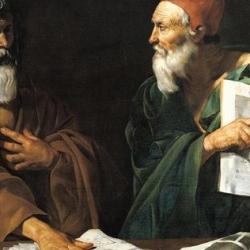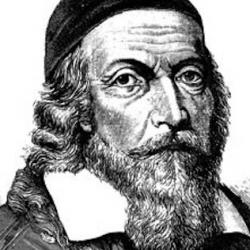For postmoderns, there is a close link between the timeless self of ancient and modern thought and the primacy of the gaze. The exaltation of the visual that Foucault attacks is expressed quite openly in an essay by Hans Jonas, “The Nobility of Sight,” who describes some of the philosophical consequences of this primacy. According to Jonas, the distinction of temporal and eternal “rests upon an idealization of ‘present’ experienced visually as the holder of stable contents as against the fleeting succession of nonvisual sensation.” Sight is the sense of “simultaneity”; we hear successions of sounds, and a single sound has duration, but we see all within our visual field simultaneously.
So also the subject-object dualism: “The gain [from Greek ‘ocularcentrism’] is the concept of objectivity, of the thing as it is in itself as distinct from the thing as it affects me, and from this distinction arises the whole idea of theoria and theoretical truth.” Sight is the active sense; sounds and smells come at us as passive recipients, but we can close our eyes and when we see we are active in relation to the passive scene. Finally, the notion of “infinity” is encouraged by the privileging of sight, extrapolated from our ability to see to a distant horizon. The notion of a timeless self detached from the objective world beyond it makes some sense within an ocularcentric system.
The Cartesian self is entwined with this privileging of the ocular. As Martin Jay notes, “Descartes was a quintessentially visual philosopher,” and Rorty agrees: “in the Cartesian model, the intellect inspects entities modeled on retinal images . . . . In Descartes conception – the one which has become the basis for ‘modern’ epistemology – it is presentations which are in the mind.” It is no accident that Descartes wrote an Optics as well as a Meditations. Martin Jay describes the importance of visual imagery to the construction of the Cartesian self:
“Despite his avowed dualism, the specular element in his philosophy could foster an ultimately identitarian monism. Even if later readings of Descartes discovered their linguistic mediation, the innate ideas he posited were still most widely interpreted as being seen ‘clearly and distinctly’ by the mind’s eye. Not surprisingly, his more religious followers like Malebranche were able to resurrect the spiritual metaphysics of light characteristic of earlier theologians like Grosseteste, while others were able to take his encomium to the telescope as a boost to their empiricist inclinations.
“Cartesian dualism was, moreover, particularly influential because of its valorization of the disembodied eye . . . shared by modern science and Albertian art. In either of its guises, speculative or observational, it justified a fully spectatorial rather than incarnate eye, the unblinking eye of the fixed gaze rather than the fleeting glance . . . . The Descartes who had called his own philosophical quest a journey in which he tried ‘to be a spectator rather than an actor’ in the affairs of the world had reduced the visual world . . . to a visual field and consigned the body to objecthood in it.”













